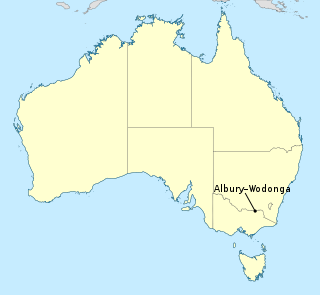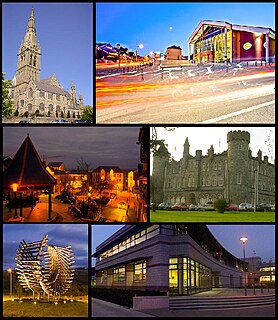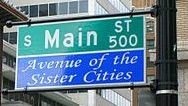The National Spatial Strategy 2002-2020 is a twenty-year planning framework, with an aim of balancing social, economic and physical development in the Republic of Ireland.
The National Spatial Strategy 2002-2020 is a twenty-year planning framework, with an aim of balancing social, economic and physical development in the Republic of Ireland.
The strategy seeks both to prevent the Greater Dublin Area becoming an area of problematic urban sprawl, and also to prevent rural areas becoming fragmented with scattered one-off housing. It seeks to do this by identifying various urban centres outside Dublin as focus points for concentrated development, drawing this away from both Dublin and the rural areas. The report describes two tiers of regional centres: a few larger "Gateways" with smaller "Hubs" as more local foci. When the NSS was being developed, William Thomas proposed a brand new city in the west of the country, gaining some news coverage. [1]
There was controversy over the selection of the gateways and hubs, with towns not selected feeling aggrieved. A notable concept was the "Midland Gateway" comprising three of the larger towns in the midlands. The intention was a polycentric model with some inspiration from the Triangle Region Denmark. The inclusion in the plan of Derry, which is across the border in Northern Ireland, was a reflection of improved cross-border co-operation in the wake of the Northern Ireland peace process.

Derry, officially Londonderry, is the second-largest city in Northern Ireland and the fifth-largest city on the island of Ireland. The name Derry is an anglicisation of the Old Irish name Daire meaning "oak grove". The old walled city lies on the west bank of the River Foyle, which is spanned by two road bridges and one footbridge. The city now covers both banks.
Most of the transport system in Ireland is in public hands, either side of the Irish border. The Irish road network has evolved separately in the two jurisdictions into which Ireland is divided, while the Irish rail network was mostly created prior to the partition of Ireland.

Albury–Wodonga is the broad settlement incorporating the twin Australian cities of Albury and Wodonga, which are separated geographically by the Murray River and politically by a state border: Albury on the north of the river is part of New South Wales, while Wodonga on the south bank is in Victoria.

County Donegal is a county of Ireland in the province of Ulster and in the Northern and Western Region. It is named after the town of Donegal in the south of the county. It has also been known as County Tyrconnell, after the historic territory of the same name, on which it was based. Donegal County Council is the local council and Lifford the county town.
An urban growth boundary, or UGB, is a regional boundary, set in an attempt to control urban sprawl by, in its simplest form, mandating that the area inside the boundary be used for urban development and the area outside be preserved in its natural state or used for agriculture. Legislating for an "urban growth boundary" is one way, among many others, of managing the major challenges posed by unplanned urban growth and the encroachment of cities upon agricultural and rural land.
Regional planning deals with the efficient placement of land-use activities, infrastructure, and settlement growth across a larger area of land than an individual city or town. Regional planning is related to urban planning as it relates land use practices on a broader scale. It also includes formulating laws that will guide the efficient planning and management of such said regions. Regional planning can be comprehensive by covering various subjects, but it more often specifies a particular subject, which requires region-wide consideration.

Omagh is the county town of County Tyrone, Northern Ireland. It is situated where the rivers Drumragh and Camowen meet to form the Strule. Northern Ireland's capital city Belfast is 68 miles (109.5 km) to the east of Omagh, and Derry is 34 miles (55 km) to the north.

Rail transport in Ireland is provided by Iarnród Éireann in the Republic of Ireland and by Northern Ireland Railways in Northern Ireland.

Letterkenny, nicknamed 'the Cathedral Town', is the largest and most populous town in County Donegal, Ireland. It lies on the River Swilly in East Donegal in the west of Ulster, and has a population of 19,274. It is the 36th largest settlement in all of Ireland by population, and is the 15th largest settlement by population in the province of Ulster. Along with the nearby city of Derry, Letterkenny is considered a regional economic gateway for the north-west of Ireland. Letterkenny acts as an urban gateway to the Ulster Gaeltacht, similar to Galway's relationship to the Connemara Gaeltacht.

Derry City Council was the local government authority for the city of Derry in Northern Ireland. It merged with Strabane District Council in April 2015 under local government reorganisation to become Derry and Strabane District Council.

Ribbon development refers to the building of houses along the routes of communications radiating from a human settlement. The resulting linear settlements are clearly visible on land use maps and aerial photographs, giving cities and the countryside a particular character. Such development generated great concern in the United Kingdom during the 1920s and the 1930s as well as in numerous other countries during the decades since.

The Liverpool City Region is a combined authority region of England, centred on Liverpool, incorporating the local authority district boroughs of Halton, Knowsley, Sefton, St Helens, and Wirral. The region is in the historic counties of Lancashire and Cheshire. Depending on the definition used, the region's population is between about 1.5 million and 2.3 million.
In January 2004, Deputy Prime Minister John Prescott announced the United Kingdom government's Expansion plans for Milton Keynes However, the change of government in 2010 and the abolition of the Regional Spatial Strategy in 2012/13 saw these plans revoked and a planned expansion of up to 44,000 dwellings reduced to 28,000. The Milton Keynes Core Strategy was published in July 2013 and regards the figure of 28,000 new homes to be the minimum figure.
Interreg is a series of programmes to stimulate cooperation between regions in and out of the European Union (EU), funded by the European Regional Development Fund. The first Interreg started in 1989. Interreg IV covered the period 2007–2013. Interreg V (2014–2020) covers all 27 EU member states, the EFTA countries, six accession countries and 18 neighbouring countries. It has a budget of EUR 10.1 billion, which represents 2.8% of the total of the European Cohesion Policy budget. Since the non EU countries don't pay EU membership fee, they contribute directly to Interreg, not through ERDF.

The A5 is a major primary route in Northern Ireland. It links the city of Derry in County Londonderry with Aughnacloy, County Tyrone via the towns of Strabane and Omagh. Just south of Aughnacloy is the border with the Republic of Ireland, where the A5 meets the N2 to Dublin. Between them the A5 and N2 are the main road link between County Donegal in the Republic and Dublin.

InterCity is the brand name given to rail services operated by Iarnród Éireann that run between Dublin and other major cities in Ireland. InterCity branding is also used in other European countries by unaffiliated organizations.

Midlands Gateway also known as Lake-Counties Gateway is area centered between the major Irish airports, of Dublin, Shannon, and Knock, with ever-improving ground infrastructure, the Irish government and local authorities plan to alleviate urban problems, by decentralising to growing gateways such as the Midlands Gateway of Offaly and Westmeath. According to the Irish National Development plan the Midlands gateway objectives are to reinforce and further develop strong links between these towns and the neighbouring urban centres, by means of infrastructure and services in order to maximise internal and external accessibility as a location for investment business development and tourism.

Main Street is a metonym used to denote a primary retail street of a village, town or small city in many parts of the world. It is usually a focal point for shops and retailers in the central business district, and is most often used in reference to retailing and socializing.

Willie Miller was a designer and urbanist based in Glasgow, Scotland. He was Principal of Willie Miller Urban Design, a design practice based in the West End of Glasgow. Miller studied at Glasgow School of Art, then at the Scott Sutherland School of Architecture and The Built Environment in Aberdeen, and was Assistant Director of Planning at Monklands District Council, prior to establishing WMUD in 1996. He died in January 2021 at the age of 70.
In Ireland, the term city has somewhat differing meanings in Northern Ireland and the Republic of Ireland.